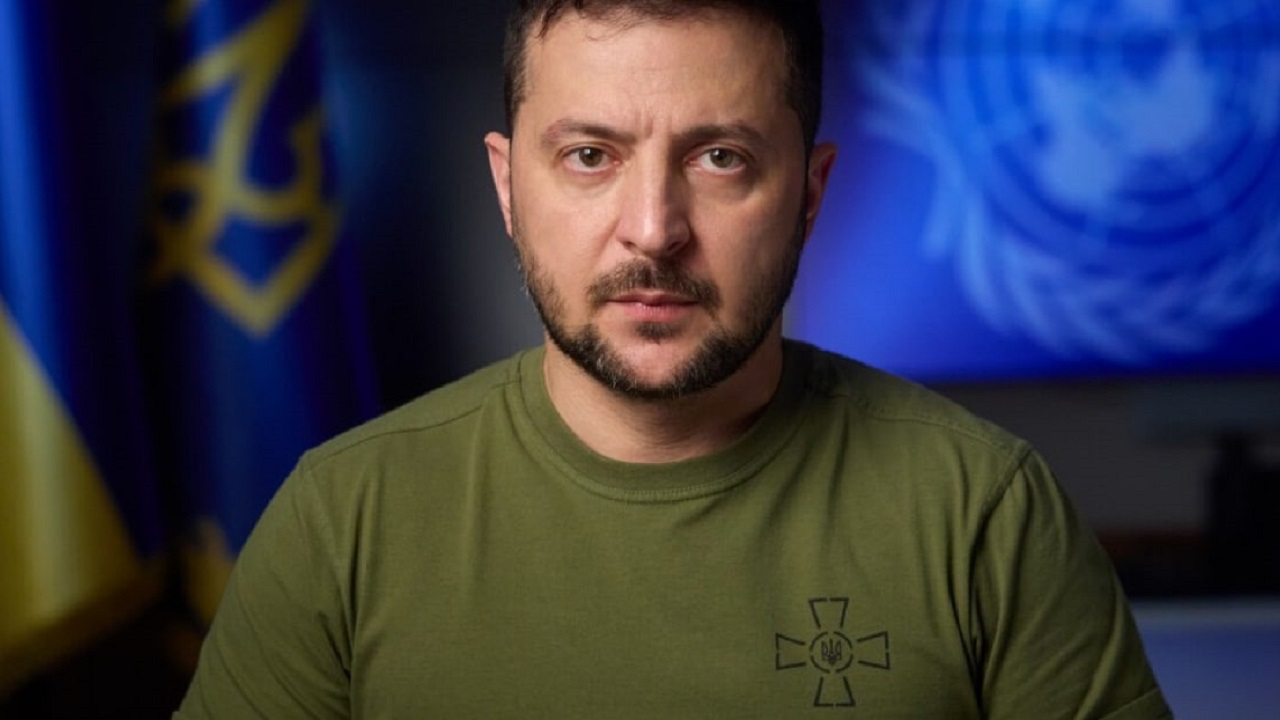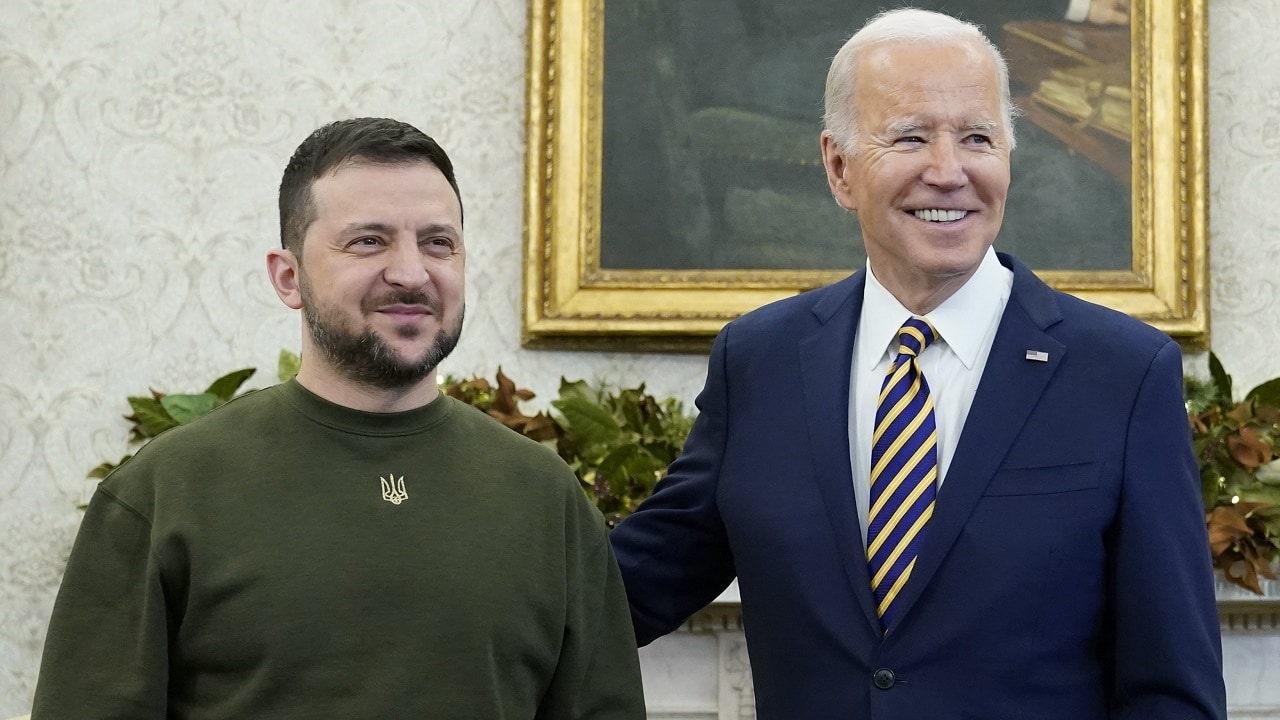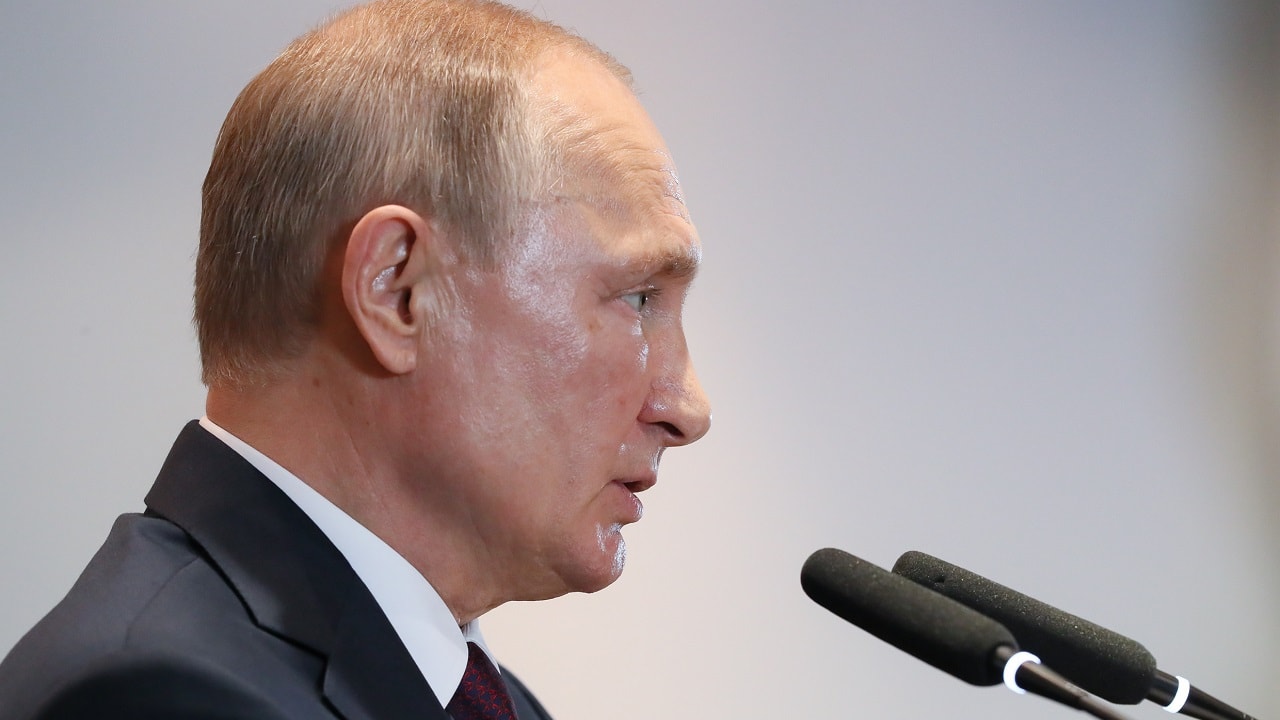Could Ukraine Have Avoided War with Russia?
Ukrainian President Volodymyr Zelensky is, according to a President Donald J. Trump social media post on Wednesday, a “dictator without elections”! Sen. Richard Blumenthal said Trump’s statement was “utterly despicable.” Is the Senator’s anger justified – or was Trump’s criticism valid? Emotions aside, evidence suggests Trump is more right than is commonly understood.
Zelensky vs. Trump and the Ukraine War
The Washington Post conveyed its shock and astonishment at Trump on Wednesday, posting this alarming headline “Echoing Kremlin, Trump blames Zelensky for war.” Trump’s sin, as it turns out, was to challenge the Western narrative on Ukrainian President Volodymyr Zelensky by revealing the truth that he indeed bears a portion of the blame for the start – and continuation – of the Russia-Ukraine War.
The Washington Post, echoing the consensus view of mainstream foreign policy views in the West, didn’t merely report what Trump had said the night before during a Mar-a-Lago press conference but prefaced, in large print bold headlines, that Trump had been “Echoing Kremlin” in what he said. They willfully sought to discredit his words by tarring him from the outset, tying his words to what many in the West consider an enemy.
This article by the Washington Post is only one of thousands published during the three-year war, but it is highly illustrative of the mentality held by so many of the foreign policy elite in the United States and Western world. This worldview is both at odds with a comprehensive recognition of reality and dangerous because it has based national policies on inaccurate assumptions.
It is thus no surprise that this war has dragged on, unsuccessfully, for three years under Western leadership, inflicting a staggering death toll on the Ukrainian men fighting that any rational military analyst could have shown, from the beginning, was always unwinnable for Ukraine. History will judge very harshly Western leaders for their blind support of a war that many knew could never be won, resulting in the deaths of likely over one million Ukrainians – and perversely enabling Russia to seize control of much Ukrainian territory.
This current firestorm started at a press conference last night, the Post revealed, when Trump referenced an interview earlier in the day by Zelensky in which he complained that the first talks between Russia and the U.S. in Saudi Arabia had not included him. In response, Trump said in a mocking voice, “Today I heard, ‘Oh, we weren’t invited” to Riyad, and retorted “Well, you’ve been there for three years, you should have ended it,” adding that Zelensky “should have never started it. You could have made a deal.”
If journalistic standards still existed in Washington, you would have expected an examination of Trump’s claims in the remainder of the news article, allowing readers to judge whether the criticism was valid or unfair. Instead, This single declarative sentence was the sum total of all the Post applied to Trump’s claim: “Ukraine did not start the war, which began with Russia’s full-scale invasion in February 2022.”
The entire rest of the piece—which should more appropriately have been in the opinion section—was filled with quotes of various other Western and Ukrainian figures expressing their indignation with Trump. The Post chose not to include a single quote from any person in support of Trump. No surprise there, as their agenda, as it has been from the outset, is to stick with simplistic narratives: Russia is bad/Ukraine is good. Period.
The reality is rather different.
Ukraine War and the No Good Guys DilemmaPlainly put, there is no ‘good guy’ in this saga. There is only the Ukraine side and the Russian side. Neither is an angel and both have blood and guilt on their hands. More importantly, the writers of the Post piece either do not know the facts or they’re intentionally limiting them.
First, the war definitely did not start on February 24, 2022. That’s when Russian forces launched an invasion of Ukrainian territory, but not when the conflict began.
Arguably, the first seed planted in this war came on April 3, 2008, in Bucharest when NATO officially declared, “NATO welcomes Ukraine’s and Georgia’s Euro-Atlantic aspirations for membership in NATO. We agreed today that these countries will become members of NATO.” The very next day, Putin declared that any attempt to expand NATO into Ukraine would be viewed by Russia as “a direct threat.” Naturally, the West and the U.S. ignored his warnings and continued to declare that Ukraine would be invited into the alliance.
Then there came the events of the Maidan in late 2013 when the United States openly, through Victoria Newland and other American officials, openly supported protesters seeking to overthrow the legally elected Ukrainian government while covertly conspiring to select pro-Western Ukrainian leaders to replace pro-Russian Viktor Yanukovich.
When civil war broke out in 2014 following the ouster of Yanukovich, Putin helped the ethnic Russian rebels who resisted the new U.S.-selected Ukrainian leaders and then annexed Crimea in March 2014. During the ceremony announcing the annexation, Putin explained that the West had crossed “a red line” in supporting what he considered the illegal overthrow of the Ukrainian government. The West, he argued, “cheated us again and again” and gave this prescient warning to the West: the cheating, he claimed, is the latest example of “the expansion of NATO in the East, with the deployment of military infrastructure at our borders.”
Enter ZelenskyZelensky was elected president in 2019 on a peace-with-Russia platform. Six months into his presidency, he met in Paris with the leaders of France, Germany, and Putin. The New York Times wrote that the meeting was supposed to ensure the enforcement of the 2015 Minsk accords meant to end the civil war. The Times noted that the accords had “required Ukraine to change its laws and Constitution to provide for (limited political autonomy of the Russian-speaking east) but, like most elements of the Minsk agreement, this has not been put into effect.”
Instead of putting Minsk into effect and amending its constitution as agreed to, in 2021 Zelensky made a dramatic – and as it has turned out, fatal – course change. He signed a law in March of that year declaring that Ukraine would return its territories, especially Crimea, back to Kyiv control. One month later, Russia began massing troops near the Ukrainian border. It wasn’t hard to figure out why.

Ukraine’s President Zelensky. Image Credit: Creative Commons.
A CSIS analysis of the troop buildup found that Putin’s actions were designed to signal “the new U.S. administration—namely that the Biden administration should not attempt to challenge the status quo vis-à-vis Ukraine by bringing it closer to the North Atlantic Treaty Organization (NATO) or aid in the liberation of parts of occupied Donbas.” Both Biden and Zelensky ignored the warnings, and the buildup continued through December 2021.
At that time, Zelensky remained firm in his resolve that the Crimea and Donbas areas would come back to Ukraine and the U.S. and European nations continued to declare that Ukraine would be admitted to NATO. In response, on December 22, 2021, Putin said, “What the U.S. is doing in Ukraine is at our doorstep… And they should understand that we have nowhere further to retreat to. Do they think we’ll just watch idly?” At that time, there were nearly 100,000 Russian troops on the Ukrainian border.
Zelensky and Biden both knew Putin was serious about preventing NATO membership for Ukraine. Biden famously issued a public warning on February 11, 2022, just 13 days before the invasion began, that his intelligence sources revealed a “very distinct possibility” that Russia would attack to prevent NATO membership for Ukraine and to preserve Crimea.
Putin the Forgotten Treaty: No NATO for UkraineOn December 17, 2021, Putin had proposed a treaty between the United States and Russia that could have prevented war. Key in the proposed agreement was Article 4 which stated “The United States of America shall undertake to prevent further eastward expansion of the North Atlantic Treaty Organization and deny accession to the Alliance to the States of the former Union of Soviet Socialist Republics” – i.e., Ukraine.
The treaty would not have required any territorial concessions to Russia, would not have constrained Ukraine or any European state from engaging in bilateral military or economic engagement with Kyiv, or threatened any other state. War could have been avoided with the mere “concession” of acknowledging what everyone in the West already knew: no NATO for Ukraine.
So, when Trump now says Zelensky could have prevented this war, it’s not empty rhetoric; it’s verifiably true.
Unfortunately, Zelensky’s failures didn’t stop at failing to stop the war; his strategic errors continued into it, refusing every opportunity to end it.
A Chance to End War, Missed AgainTwo months into the war, Russian and Ukrainian negotiators had hammered out the general outlines of a negotiated settlement to end the war in Istanbul. On March 29, 2022, The Washington Post reported that the two sides had made real progress on a deal that would end the war by Ukraine declaring neutrality and Russia withdrawing back to its pre-war positions and providing Kyiv with security guarantees. News reports over the years have claimed then-UK Prime Minister Boris Johnson talked Zelensky into rejecting the deal, but earlier this month, Zelensky himself rebuffed those claims, saying it was he who sank the deal.

Volodymyr Zelensky and Biden. White House Handout.
The next chance to end the war via negotiations came in November 2022 when then-Chairman of the Joint Chiefs of Staff, Gen. Mark Milley, publicly said that Ukraine should “seize the moment” and consider reaching a diplomatic solution. Days later, Biden officials sought to walk back the statement, with Politico reporting that “senior officials scrambling to assure Ukraine it wasn’t undercutting its goal of expelling the Russians.” Instead of taking advantage of the opportunity to end the war then, the White House “reassured” Zelensky not to give up his dream of expelling the Russians – and Zelensky complied, opting instead to launch a major offensive about six months later.
An offensive that utterly and predictably failed.
At the end of 2023, when even the Washington Post could not hide the totality of the Ukrainian offensive failure, Zelensky was faced with the stark reality that the war could never be won on the battlefield. Any rational-thinking person would have sought to end the war by negotiations, ending the pointless suffering of his people. Instead, he kept fighting, rejecting any moves to peace, still clinging to the grossly unrealistic desire – as late as July 2024 – that he would still eventually push Russia back to the 1991 borders.
A War With No EndingEven after Trump was elected in November 2024 with the express purpose of bringing the war to an end “in one day,” Zelensky continued to press for more support from both the outgoing Biden Administration and European countries – oblivious to the political reality that Trump would never follow his predecessor and provide war material indefinitely. By any rational assessment, the war was lost for Ukraine, and the only course that had a realistic hope of success was for Zelensky to seek the best end-of-war deal he could get from Russia.
To date, Zelensky has refused to acknowledge such realities and, in the past 48 hours, has resorted to publicly challenging Trump, apparently calculating that accusing the American president of being duped by Russia will force Trump to reverse course and give Zelensky what he wants.
Ukraine Is Now Hurting ItselfThe harsh truth is that even if Trump wanted to, there is no saving Ukraine militarily. That faint hope evaporated years ago, but Zelensky has been unwilling to accede to reality. Consider the mounting cost the Ukrainian leader’s actions have had on his own country:
-Had he implemented the Minsk Accords in 2019, giving political autonomy to the ethnic Russians in eastern Ukraine (and acknowledging no NATO membership), there would never have been war, no Ukrainians would have died, and even the civil war would have come to an end.
-Had Zelensky been willing to abide by Putin’s terms in December 2021 – terms that were not as good for Ukraine as the Minsk agreement – still no Ukrainians would have died, and Russia would not have invaded.

Russian President Putin. Image Credit: Creative Commons.
-Had Zelensky have agreed to end the war at the Istanbul meetings of April 2022, the war could have ended after only two months, and eventually Russian troops would have fully withdrawn back to the pre-war lines. Ukraine’s losses would have been limited, and they would still have had the ability to engage with the West and rebuild their military over time.
-Had Zelensky acknowledged the failure of the 2023 summer offensive and sought a negotiated settlement, hundreds of thousands of Ukrainian men would still be alive, though he would have lost more territory than he would have in April 2022.
Zelensky took none of those options, instead rejecting every diplomatic off-ramp that existed. Each time he refused to take them out, more of his men died, more of his cities were destroyed, and more of his territory fell under Russian control. With each subsequent round of negotiations, the Russian entry point is worse for Ukraine than the one before.
What Happens Now?Today, the Russian army is more potent than in February 2022. The Russian economy is among the best in all of Europe, and its defense industrial base is working at a pace that could support a high-intensity war indefinitely. Its forces are continually capturing Ukrainian territory, driving its army further and further to the west. If Zelensky tries to prevent Trump from reaching an end-of-war deal with Putin, the Russian army is likely to keep fighting until it takes by force of arms what Putin thinks he needs to secure his western border.
If Russia has to fight for territory instead of getting it through negotiations, it will likely capture far more than merely the four oblasts they annexed in 2022, going possibly all the way to the Dnieper River. The harsh truth is this: Zelensky can either let Trump negotiate an ugly deal now – a deal necessitated because Zelensky refused to take any of the deals on the table in the preceding years – or Russia will keep fighting until it inflicts an outright military defeat on Ukraine. At that time there won’t be any negotiating, it’ll just be dictated terms of surrender.
That is what Zelensky has ‘won’ for his people over the past three and a half years and what awaits Ukraine if he does not now acknowledge reality.
About the Author: Daniel L. DavisDaniel L. Davis retired from the U.S. Army as a Lt. Col. after 21 years of active service and is now a 19FortyFive Contributing Editor, writing a weekly column. He was deployed into combat zones four times in his career: Operation Desert Storm in 1991, Iraq in 2009, and Afghanistan twice (2005, 2011). Davis was awarded the Bronze Star Medal for Valor at the Battle of 73 Easting in 1991 and awarded a Bronze Star Medal in Afghanistan in 2011. He is the author of The Eleventh Hour in 2020 America. Davis gained some national notoriety in 2012 when he returned from Afghanistan and published a report detailing how senior U.S. military and civilian leaders told the American public and Congress the war was going well while, in reality, it was headed to defeat. Events since confirmed his analysis was correct. Davis was also the recipient of the 2012 Ridenhour Prize for Truth-telling. Currently, you can find Lt Col. Daniel Davis on his YouTube channel, “Daniel Davis Deep Dive,” where he analyzes war, national security, politics, foreign policy, and breaking news with expert commentary.